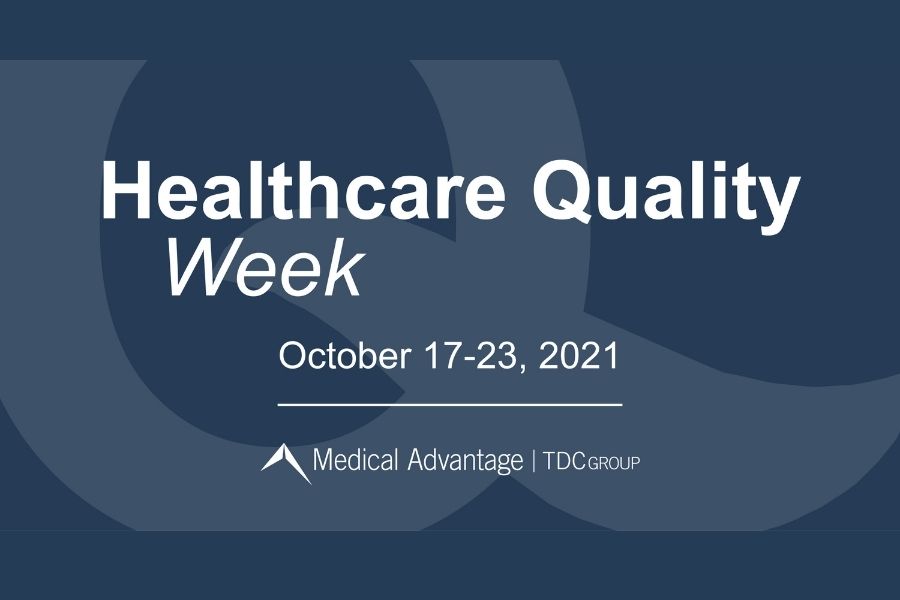#1: Understand New Changes to Quality Measures – Especially for MIPS 2022
#2: Employ This New MIPS Checklist for 2022
#3: Upgrade Your Quality and Financial Data Tracking
#4: Implement an “All Hands On Deck” Strategy with Physicians and Staff
In this article, we’ve put together four critical steps that independent practices, practice groups, and private equity healthcare MSOs must understand to address common quality issues in healthcare.
This year, the National Healthcare Quality Week (Oct. 17-23, 2021) brought to us by the NAHQ (National Association for Healthcare Quality) is more than just a celebration of an aspirational philosophy or a time to raise awareness of the positive impact that healthcare professionals have on their communities, as in years past.
This 2021 coming of the HCQW brings to the forefront issues that will be critical to the financial viability of medical practices in the upcoming year, if not their outright survival.
The more challenging and strict changes to the CMS’ MIPS program for 2022 will endanger reimbursement amounts and bonuses for practices, and threaten to increase penalty payments/withholdings. Private Payers, as is the norm, will follow CMS’ lead in continuing to make healthcare quality metrics, and reporting, a more demanding factor in practice reimbursement and/or financial penalties.
#1: Understand New Changes to Quality Measures – Especially for MIPS 2022
There are three significant updates to MIPS for the 2022 performance year that are likely to impact provider scores and associated payment adjustments:
Removal of the Extreme and Uncontrollable Circumstances (EUC) Policy:
First, CMS has NOT indicated that they plan to continue the reporting flexibilities enacted due to the ongoing COVID-19 pandemic for the years 2020 and 2021. Providers will no longer have the option of requesting reweighting of one or multiple scoring categories under the EUC policy.
Many practices and providers have been using the COVID-19 EUC hardship as a “get out of jail free” card for the 2020 and/or 2021 performance years, and with good reason. However, when practices are not actively working on MIPS, their MIPS performance monitoring inevitably falls by the wayside. The MIPS Quality performance category requires a full 12 months of data submission, so the highest performers will be those who start the year 2022 off strong.
Increased Performance Thresholds:
The second notable change for MIPS in 2022 is increased performance thresholds. To avoid a negative payment adjustment in 2024, providers will need to score at least 75 points in MIPS in 2022. To achieve “exceptional performer” status and earn a share of that bonus pool, providers will need to score at least 89 points.
While CMS has been gradually building to this point, many providers will still be unprepared for the stark reality of MIPS as it was originally designed – a program that puts providers in competition with each other. This is especially true for those providers who have used the COVID-19 EUC for the last two years, and they have let their MIPS efforts slide.
Quality and Cost Categories Will Now Be Rated Equally:
The third and final major update is that – for the first time since the MIPS program’s inception – the Quality and Cost categories will be weighted equally at 30% each.
This could not come at a worse time for providers. Cost is the least understood MIPS category, and for good reason. Not only do providers not actively report data (as CMS obtains it from administrative claims), the specifications behind measure calculation, attribution, and scoring are extremely difficult for non-mathematicians to fully grasp. This perfect storm will undoubtedly result in a significant drop of MIPS Final Scores across the board for 2022.
While the preceding three items are some of the most significant changes to MIPS for the 2022 performance year, they are by no means the only ones contained in the full 1,747-page Proposed 2022 MIPS Final Rule.
While understanding all these rule changes can be complex, there are best practices that medical organizations of all kinds can follow to help improve their MIPS performance.

#2: Employ This New MIPS Checklist for 2022
We have compiled a checklist of five key actions you can take to solve for quality issues in healthcare, and improve performance in, 2022:
Determine Which MIPS Data You Need to Submit
Just as there are major program changes each year, there are also smaller, category and measure-specific changes that must be reviewed. Do not make the mistake of assuming that all measures you reported previously are still available in 2022, or that the specifications for those measures have remained static.
Determine Which MIPS Framework You Should Use to Submit Your Data
These frameworks include Traditional MIPS as you have known it all along, APM Performance Pathway (APP) for providers who participate via MIPS APMs, or the MIPS Value Pathways (MVPs) which are designed around specific populations of patients. Success in any framework will be tied to understanding the associated pros and cons specific to your practice circumstances.
Research and Understand Changes to MIPS Scoring for 2022
There are category scoring changes to contend with as well. MIPS Final Scores are likely to be significantly lower than in years past, and given that performance thresholds are rising to new highs, scores that previously earned incentives may now be subject to penalties. Providers who do not evaluate their past MIPS performance against new scoring standards will be in for a rude awakening when they go to report in early 2023. And at that point, it will be too late to act.
Evaluate Your Projected MIPS Performance and Adjust Accordingly
With the MIPS changes, you need to take a critical look at your organization’s performance. Will your organization be able to continue scoring at a high enough level to avoid being penalized? Will your organization have a difficult time adjusting to a more heavily weighted cost category? It is crucial that your organization begins optimizing and updating its operational and reporting strategy for MIPS as soon as possible to get ahead of increasingly demanding and competitive MIPS requirements.
Hire a MIPS Expert
Medical Advantage’s MIPS consulting team understands how overwhelming MIPS can be. We know how medical professionals have their hands full with the day-to-day activities of tending to patients and running their practice – let alone make the time to understand a complex and ever-shifting regulatory program, and then implement operational adjustments based on those findings. Understanding and implementing MIPS policy is a full-time job – our full-time job.

#3: Upgrade Your Quality and Financial Data Tracking
Clearly, a major aspect of this CMS MIPS and Private Payer quality reporting is not just the care quality improvement itself – but the data tools required to capture the information in a meaningful and usable way.
With the new 2022 changes from CMS and Private Payers specifically and over the past several years generally, the need for quality and performance data and financial reporting in healthcare has grown tremendously — one of the reasons for Medical Advantage’s recent introduction of its Healthcare Dashboards tools, a groundbreaking new form of medical practice management software.
For medical practices, using quality improvement tools for the reporting of data, quality measures, and financials has become a huge, time-consuming – and often overwhelming – challenge. Your Practice or Practice Group has more data than ever before, generated from many systems and locations.
One important new option available to you is our Healthcare Dashboards, scaled to fit small- to medium-sized practices, practice groups, and private equity healthcare MSOs.
Medical Advantage Dashboards integrate quality reporting data across your diverse mix of systems – including EHR data, practice management, billing information, patient scheduling, payer data and more – and consolidates and organizes the information from your many sources and locations into easy-to-use, easy-to understand dashboard views.
In addition to our intuitive Dashboards, Medical Advantage can provide your practice with healthcare industry analytics and practice improvement professionals who can evaluate your quality data to identify problem areas, do Root-Cause Analysis to find out what’s causing the problems at the practice level, and further, be available to work with you, elbow to elbow at your location, to help make necessary improvements and meet the challenging new CMS and Private Payer requirements – from both a quality improvement and care quality data reporting perspective.
#4: Implement an “All Hands On Deck” Strategy with Physicians and Staff
We’ve said this same thing about Practice Marketing patient outreach; maintaining patient volume, revenue and safety during COVID; implementing OpenNotes requirements and tasks; and now on CMS/Private Payer Data Scoring improvement and reporting. We know you didn’t become a doctor to “laser-focus” at an “all hands on deck” level on everything except practicing medicine by treating people. But, that’s the reality of today’s healthcare industry.
That reality and realization actually helps it make even more sense to hire an outside consultant (to solve and manage these quality issues), such as Medical Advantage. We can coach your physicians and staff on quality issues in healthcare.
Conclusion
Here in October 2021, Healthcare Quality Week reminds us that solving for quality issues in healthcare, recording, and reporting is not just an aspiration; it’s a necessity.
With MACRA constantly changing from year-to-year, it can be challenging for practices to keep up. Now is a great time to consider hiring consultants like Medical Advantage’s MIPS Consultants, talk to us about our Healthcare Dashboards, or just have an initial chat with us about the overall state of your practice and the many things we can do to help meet your needs and goals.
Medical Advantage is a mid-sized, national medical consulting firm, with over 25 years’ experience in helping medical practices solve an array of operational, financial, and quality issues in healthcare. It’s what we do!
Contact Medical Advantage today to find out about how we can not only help you meet the new challenges of Quality Reporting for 2022, but revolutionize the way your medical practice does business.





